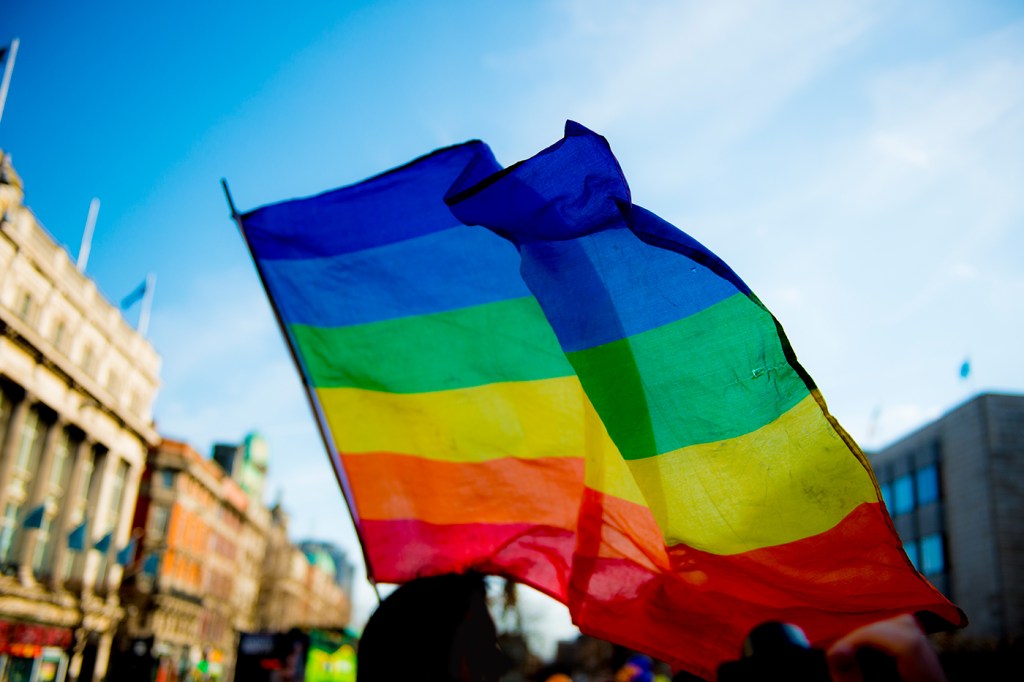Cutting through the ‘illusion of more inclusiveness’ with LGBTQ representation in the media

This week marks the return of the Netflix original, Orange is the New Black, a show that’s been roundly praised for its representation of LGBTQ people (as well as other groups that are often marginalized or invisible in most mainstream media). Additionally, this Saturday, Boston Pride Week caps off with the city’s annual Pride festival and parade.
With so much to celebrate, it’s also a time to take stock of the victories that LGBTQ communities have achieved and the challenges they still face. We asked Moya Bailey—assistant professor of cultures, societies, and global studies; and women’s, gender, and sexuality studies—to assess the state of LGBTQ representation and acceptance in today’s society.
Bailey said that queer representation in the media is “getting closer,” adding that “some representation is better than no representation.” She cautioned, however, that the increase in diverse backgrounds on TV doesn’t necessarily correlate to an increase in social acceptance of those backgrounds.
“I think there’s an illusion of more inclusiveness,” she said, “but there’s still a lot to be done in terms of acceptance.”
What do you think of recent queer representation in the media?
I would say we’re not there yet, but we’re getting closer. It’s a process. What we’ve seen lately is more queer representation that has been really successful in making people more comfortable with queer communities in some regards, but there’s still a lot of backlash. For example, queer young people have felt more comfortable coming out to family members, but we’re also seeing an increase in queer youth homelessness—an indication that families have not been OK with it.
I think there’s an illusion of more inclusiveness, but there’s still a lot to be done in terms of acceptance.
What do you mean by “an illusion?”
Because people are seeing more queer and trans people on TV, there’s a perception that representation is the same as social acceptance. But just because you see different groups on TV, doesn’t mean their place in society has changed.
In the 1960s, actress Nichelle Nichols became the first black woman on the TV series Star Trek, where she played Lieutenant Uhura. That made news. But she said it was actually really hard, and a lot of people didn’t want to see her on the show. Eventually, Martin Luther King, Jr. reached out to her, and told her she needed to stay, that she was important to people, and that her role was important to people.
To me, that’s one of those instances where the representation did have an impact. Even with that, though, we still see a lot of racial violence in our society.
Broadly, this is one of those ‘both/and’ situations, where it seems we’ve taken some steps forward and some steps back. It’s complicated, but generally, I think some representation is better than no representation.
Are there any media organizations or teams getting it right?
In the age of social media, people are creating the work they want for themselves. Part of my research has been to look at some of the YouTube videos and personalities, and some of the hashtags in reference to LGBTQ communities. Queer people of color have been creating the kind of queer representation they want to see of themselves, and that in turn, is helping to create community.
For example, Her Story has been incredible in telling the story of trans women, and making it accessible to a broader audience. Janet Mock’s hashtag, #GirlsLikeUs, is another example. For trans women to have a place online to come together is really empowering.
Two years beyond the landmark Supreme Court ruling that legalized same-sex marriage, what are the issues currently on the forefront for the LGBTQ community?
Poverty and homelessness are the biggest, to my mind. Marriage equality is and was important, but to a certain extent, it’s most beneficial to people of a certain privilege—that’s been an issue that LGBTQ folks of color, and LGBTQ folks who come from rural communities have really been trying to address.
We also need ways to support young people who are coming out to their families so they aren’t abandoned afterward. We need to address the rate at which trans women, and in particular, trans women of color, are being murdered.
It’s still very much a work in progress, though on the positive side, there have been some exciting initiatives that people are trying, with the goal of changing the way people interact with people of gender differences.





